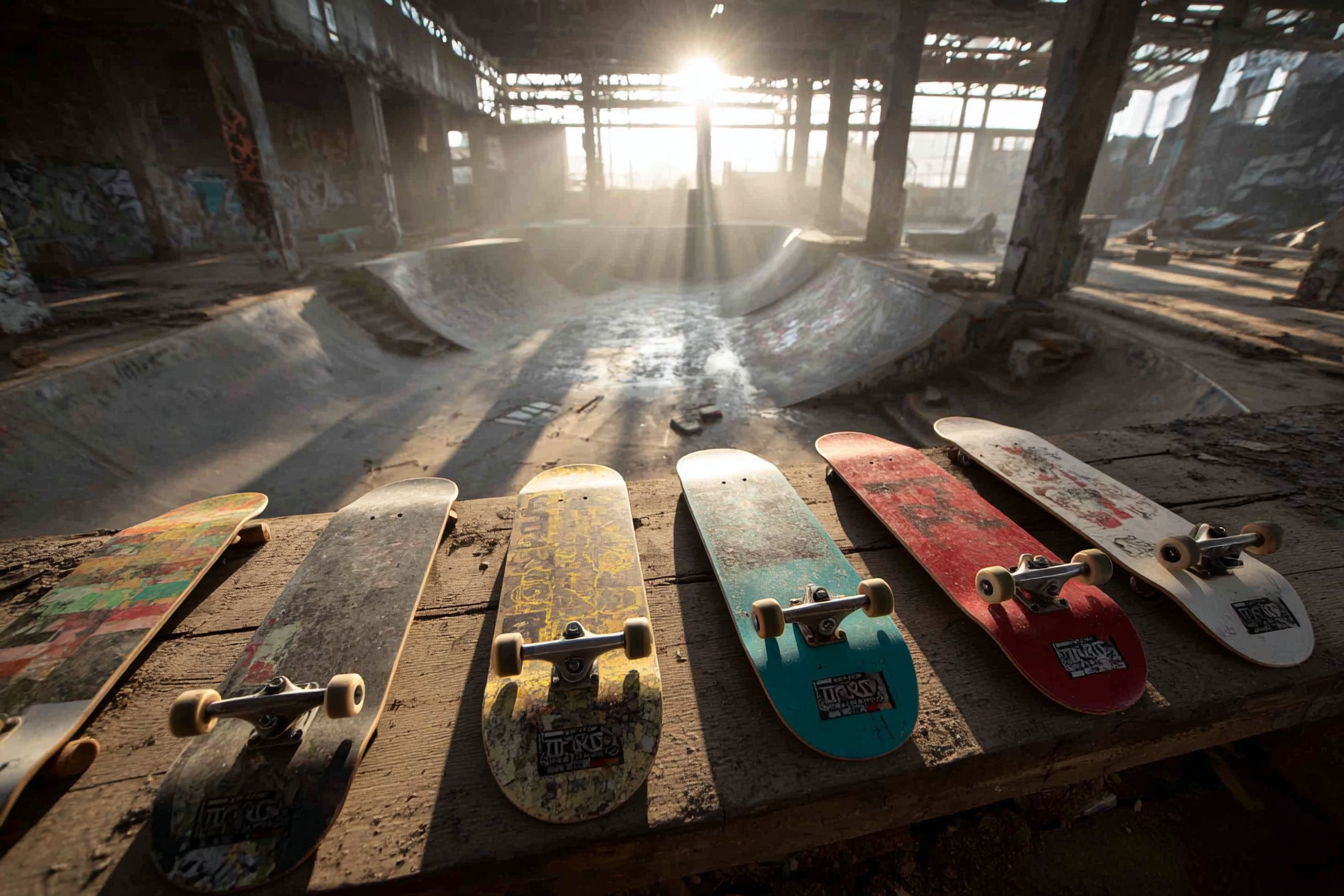Skateboarding culture, known today as a symbol of creativity, freedom, and rebellion, has origins that stretch back decades. It is a culture deeply rooted in innovation, community, and an enduring spirit of exploration and self-expression. But where did skateboarding culture actually begin? How did a simple hobby involving balancing on a makeshift board evolve into a worldwide phenomenon and lifestyle? In this article, we’ll explore the fascinating origins of skateboarding culture—starting from its early inventions to the influential moments and key figures that shaped its identity.
The Birth of Skateboarding: Early Inventions and Prototypes
The origin of skateboarding dates back to the late 1940s and early 1950s, emerging as a natural offshoot of surfing culture. Initially, surfers who longed to practice their moves when the waves were flat began experimenting with putting wheels on wooden planks. These early, rudimentary skateboards were often homemade, crafted using wooden boxes, roller skate wheels, or metal casters. They lacked the technical precision and safety features of today’s skateboards but served as an exciting way to replicate surfing experiences on dry land.
In the late 1950s, companies started to take notice. The American surfer Larry Stevenson is often credited with commercializing skateboarding by founding Makaha Skateboards in 1963 and later creating the first skateboard magazine, “The Quarterly Skateboarder.” His contributions helped formalize skateboarding as a sport and helped boost its popularity. Around the same time, other firms released their versions of skateboards, experimenting with wheel designs and board shapes.
Surfing: The Cultural Root That Shaped Skateboarding
Skateboarding did not just invent itself in isolation—it was born from the ethos and style of surfing. The culture of surfing, with its emphasis on flow, individual style, and connection to nature, heavily influenced early skateboarders. This relationship explains many stylistic elements of skateboarding, including the carving motions and the spirit of innovation and freedom that characterizes the sport.
Surfers viewed skateboarding as “sidewalk surfing,” a way to keep their skills sharp and maintain the feeling of gliding even when waves were scarce. The fluid, carefree approach of surfers naturally translated into the early skateboard moves and the community’s laid-back vibe. This connection also shaped the music, fashion, and eventual attitude of skateboard culture, incorporating elements reminiscent of beach life and surf ethos.
The First Skate Communities and Early Skateparks
As skateboarding grew in popularity throughout the 1960s and early 1970s, small communities of skateboarders sprang up, often centered around neighborhoods, schools, or local pools in places like California. Bowl skating—using empty swimming pools as urban skate terrain—became especially popular, offering a new dynamic environment for tricks and style.
This enthusiasm eventually led to the creation of the world’s first purpose-built skateparks. One landmark example is the Skateboard City park (opened in Tucson, Arizona) in 1965 and the Del Mar Skate Ranch in California (opened in 1976). These parks allowed skaters to practice and showcase their skills in a controlled environment, sparking increased visibility and the growth of organized skateboarding events. These early parks were social hubs as well as training grounds, fostering a sense of camaraderie and competition.
Influential Moments That Defined the Early Culture
Certain moments and developments helped define the early culture of skateboarding, moving it beyond a niche pastime into a more recognized and celebrated activity. One pivotal moment was the invention of the urethane wheel in 1972 by Frank Nasworthy. Compared to the earlier metal or clay wheels, urethane wheels provided much better grip and smoothness, dramatically improving board performance and boosting the sport’s appeal.
Competitions and demonstrations began to popularize the sport further, allowing skaters to express their creativity and athleticism. The Z-Boys, a group of young skaters from Venice, California, revolutionized the style and attitude of skateboarding in the mid-1970s by introducing a more aggressive, surfing-influenced approach. Their pioneering tricks and rebellious behavior helped cement skateboarding’s image as a countercultural movement.
Key Figures and Innovators in Skateboarding’s Early Days
Skateboarding owes much of its early growth to a few visionary individuals whose innovations and passion shaped the culture. Apart from Larry Stevenson and Frank Nasworthy mentioned earlier, other pioneers played major roles:
- Christian Hosoi – Who brought aerial tricks and a flashy style to prominence in the 1980s but rose early in the culture.
- Tony Alva – One of the Z-Boys, who brought an aggressive, powerful style and helped popularize vertical skating on pools.
- Natas Kaupas – Known for pioneering technical street skating in the late ‘80s, adding a new dimension to the culture.
These and other innovators helped define the tricks, attitude, and fashion that shaped skateboarding’s identity from its origins.
How Early Culture Laid the Foundation for Skateboarding’s Growth
The pioneering spirit and close-knit communities of early skateboarding culture built a foundation that would support exponential growth in the decades to come. By focusing on creativity, freedom, and a DIY approach, early skaters cultivated a culture that valued individual expression and progression above all else.
As skateboarding gained momentum, this ethos inspired new generations of skaters worldwide to push the limits of the sport, invent new styles and tricks, and create their own cultural expressions. It also fostered a commercial ecosystem around skateboarding—including apparel brands, skate shops, magazines, and video recordings—that helped spread the culture globally.
The Legacy of Skateboarding’s Origins on Today’s Culture
The story of skateboarding’s origin is not just a history tale but an ongoing influence that continues to shape how skateboarding is practiced and perceived today. The emphasis on innovation, community, and self-expression born from those earliest days still runs deep through the culture. Skateboarding has become a global movement encompassing art, music, fashion, and sports innovation.
From underground street skating sessions to Olympic competitions, many elements trace their roots back to those humble beginnings—crafted by surfers-turned-skateboarders, hobbyists in empty pools, and visionary innovators who dared to roll on wheels attached to wood. This rich lineage ensures that the culture of skateboarding remains vibrant, evolving, and connected to a proud past of creativity and freedom.






